400 Hz frequency converters are seen as an essential tool, especially in those industries where efficiency, precision, and reliability are the main criteria. These machines are being made to change the normal power frequency into the 400 Hz range, which is fundamental for special applications such as aviation, military, and aerospace. However, why is 400 Hz apt in these scopes, and how are these frequency converters performing to cope with such strict requirements? This article is there to elaborate on the advantages of 400 Hz systems, the theory behind frequency conversion, and the broad variety of applications that rely on this technology. Whether you are a professional in the sector aiming to perfect your systems or just curious about this interesting area, this complete guide will be more than enough to show you the way to understanding everything about 400 Hz frequency converters.
Introduction to Frequency Converters
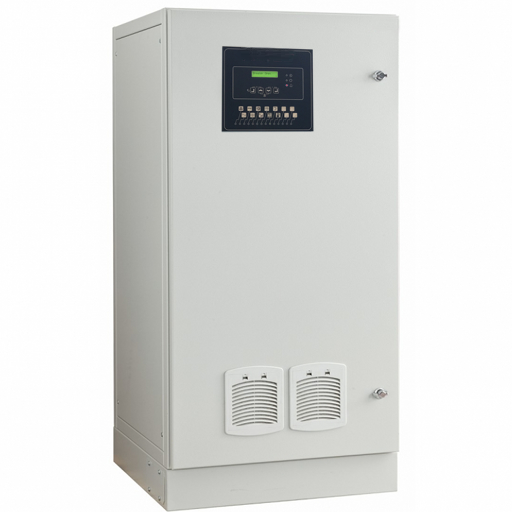
Frequency converters are devices used to modify the frequency of the power input for the needs of specific equipment or systems. It is done by the conversion of the input power into a different, more accurate, and often stable frequency, which is better-suited for the sensitive or specialized application. This results in the best-performing energy system, energy efficiency, and interoperability of the power system with the devices that bear the load. Hence, they are mainly used for aerospace, military, industrial, and test field applications where the standard power supply frequencies (50 Hz or 60 Hz) do not meet industrial needs. By appropriately changing an output frequency, frequency converters play a crucial role, ensuring reliable and efficient energy delivery.
What is a Frequency Converter?
A frequency changer is a device used to convert the frequency of a power source to the required one for a load while maintaining the close operation of the power source itself. It begins by changing alternating current (AC) to direct current (DC) using a rectifier. The resulting DC is then inverted back to AC, but at a different frequency that can be set according to the required one. Nowadays, a frequency changer is usually equipped with technologies like IGBT (Insulated Gate Bipolar Transistor) inverters and digital signal processors, which make the control more precise and the efficiency higher.
For some applications, such devices are an absolute necessity if specific equipment or systems need power at a frequency that is different from what is locally available. Industrial motors are a perfect representation, while frequency converters are often incorporated to smoothly alter motor speed and torque by changing the frequency of the supplied electrical power. Likewise, in an aircraft, naval system, or any other system, frequency converters ensure that the equipment operates in a stable and non-shifting environment, especially if the local grid supply is not used. Working on the principle of energy-efficient operations and reducing wear and tear on machinery, frequency converters remain a key component in modern electrical and mechanical systems.
Importance of 400 Hz in Various Applications
400 Hz finds its way to different applications mainly because of its efficiency and its compatibility with specific technical systems. Aviation is the industry where 400 Hz is the most common among other sectors. Electrical in aircraft is the main application of the 400 Hz frequency. Since a higher frequency means smaller and lighter components, it is essential not only in reducing weight but also in improving fuel efficiency. Likewise, ships are another means of transportation that use 400 Hz to power their onboard equipment, which is crucial in their highly integrated and operational environment.
Moreover, the 400 Hz frequency is generally used in ground support systems to power airport facilities and military bases. It can produce constant and precise power, making it an asset for maintaining systems in mission-critical applications. Industries rely on it for high-end testing and manufacturing of electronics, as it is compatible with precise, low-power, and fluctuation-requiring instruments. In conclusion, the introduction of 400 Hz frequencies will not only ensure reliability and energy efficiency but also save space wherever industries apply them across the world.
Overview of Frequency Converter Types
| Frequency Converter Type | Key Points/Parameters |
|---|---|
| Static Frequency Converters | Compact, reliable, no moving parts. |
| Rotary Frequency Converters | Uses a motor-generator, high durability. |
| Variable Frequency Drives (VFDs) | Controls motor speed and ensures efficient operation. |
| Digital Frequency Converters | Advanced control, precise output settings. |
| Single-Phase Converters | For low-power single-phase systems. |
| Three-Phase Converters | High-power industrial applications. |
| Programmable Converters | Customizable functions, flexible systems. |
| Aircraft Frequency Converters | Supports 400 Hz, aviation-specific needs. |
| Marine Frequency Converters | Designed for ships’ electrical systems. |
| Portable Frequency Converters | Lightweight, ideal for on-site use. |
Understanding 400 Hz Systems
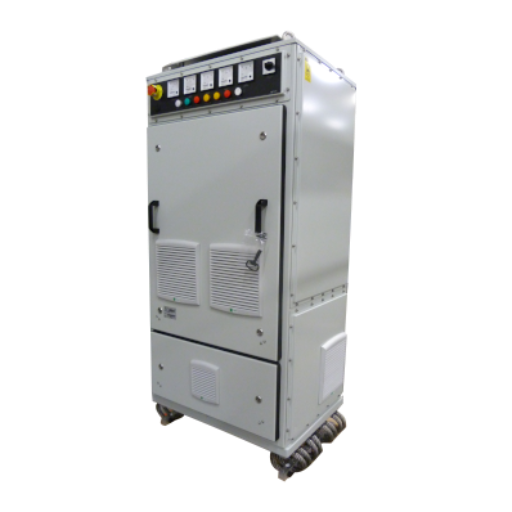
In the fields of aviation, military, and aerospace, 400 Hz systems have been widely used because of their efficiency and customized advantages. The application of these systems is related to their ability to enable the use of lighter and more compact equipment because, at higher frequencies, transformers and other electrical components decrease in size. This is a very important factor in aviation, where reducing weight and increasing space can really matter. Moreover, they help ensure a more continuous and stable power supply to intricate electronic systems, which is a significant requirement in specific industries such as aviation. The performance of these systems is not only reliable but also very flexible, allowing them to work under extreme environmental conditions. Thus, the field of their activity is specialized, and their utility is greatly appreciated.
Characteristics of 400 Hz Frequency
- Reduced Size and Weight of Components:
When we deal with higher frequencies like 400 Hz, the transformers, motors, and other electrical components can be significantly reduced in size and weight compared to those used in systems operating at the standard 50 Hz or 60 Hz. This means that the 400 Hz systems are mainly applicable to places like aircraft, naval ships, and spacecraft. - Enhanced Efficiency in High-Speed Applications:
The high speed of all electrical devices, achieved through the use of 400 Hz frequency, permits a wide range of electronic systems to operate at the highest possible speed, including radar, avionics, and guided weapon systems. - Stable and Reliable Power Output:
The consistent and reliable operation of 400 Hz power supplies guarantees trouble-free operation for highly sophisticated electronic equipment, such as communication devices and navigation systems. - Power Density Advantage:
400 Hz-based systems generate and, hence, pack more power in less space. This is particularly vital when the size of the power generation equipment must be minimized due to space limitations. - Low Level of Electromagnetic Interference (EMI):
The 400 Hz frequency is an excellent aid because it contributes to a low level of electromagnetic interference, resulting in better performance and fewer errors in nearby electronics. The level of integration in modern electronic systems highlights the importance of this.
Comparison: 400 Hz vs. 60 Hz Power Systems
| Parameter | 400 Hz Power Systems | 60 Hz Power Systems |
|---|---|---|
| Frequency | 400 Hz | 60 Hz |
| Power Density | Higher power density | Lower power density |
| Size of Equipment | Smaller, compact equipment | Larger, bulkier equipment |
| Applications | Aerospace, military, and avionics | Residential and commercial use |
| Energy Loss | Higher energy loss over long distances | Lower energy loss over long distances |
| Electromagnetic Interference | Lower EMI, better performance | Higher EMI potential |
| Transmission Distance | Limited distance capability | Long-distance power transmission |
| Cost Efficiency | Higher cost maintenance | More cost-effective |
| Power Compatibility | Requires specialized devices | Compatible with standard devices |
| System Durability | Less durable for continuous operations | More durable for extended operations |
Applications of 400 Hz in Various Industries
Aerospace Industry
A 400 Hz power supply is required by almost every aircraft system in the aerospace sector. Reducing power weight and size using high-frequency power is essential for industrial sectors like aerospace, as the system’s overall weight must be considered. 400 Hz power is used in the onboard systems, lighting, and avionics of modern commercial planes and military fighter jets.
Military Applications
The military is relying on 400 Hz power for its radar systems, communication equipment, and portable power generation. Military airplanes, warships, and ground support equipment all benefit from high-frequency power because it is more efficient and smaller in size. This makes them more mobile and functional during missions.
Marine Industry
400 Hz electrical systems are standard in many advanced marine vessels like submarines and special-purpose ships. As a consequence of that, the latter grows into a medium of exchange for opportunity, publicity, and other electronic means. The primary operation reliability and high performance of these systems are critical.
Telecommunication Sector
Telephone and wireless communication agencies, specifically related to satellite communication, use 400 Hz power systems for equipment essential to electronic devices. These companies are greatly dependent on these systems to sustain their operation and the reliability of hardware equipment for data processing and transmission.
Commercial and Industrial Equipment
The equipment used for testing, simulating, and operating various machines in different industries runs mostly on 400 Hz power. This frequency is the first choice for these applications because it can power the specialized tools and devices with greater efficiency and precision, while also being very compact.
Healthcare and Medical Devices
Some medical facilities and necessary equipment, such as imaging devices and portable medical units, operate with a 400 Hz power supply. Moreover, thanks to the light weight of these units, they can be more easily carried and hence used in more places, especially in urgent and distant medical activities.
Types of 400 Hz Frequency Converters
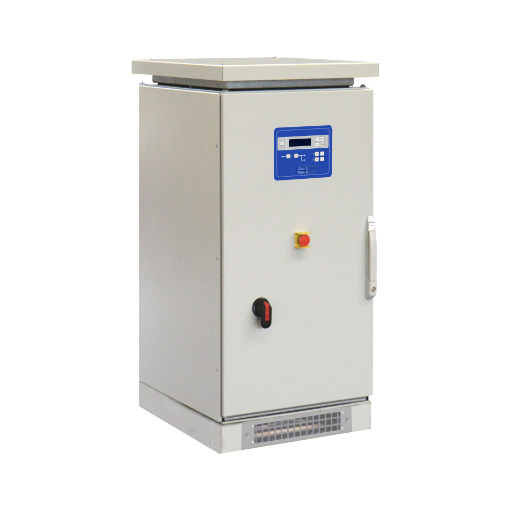
Rotary Frequency Converters
Both rotary and static converters use an electric motor attached to a generator to obtain a strong 400 Hz supply line. They are usually dependable and can work with very high loads, which is why they are best suited for industrial and aviation applications.
Static Frequency Converters
Voltage converters that can be switched to a 400 Hz output are enabled by solid-state electronics in the static type. The switch from the rotary to the static converter still requires the initial space, but maintenance is lower, and efficiency is better. As a result, modern electronic devices, like airplanes and medical apparatus, find it much less challenging to use the new design.
Hybrid Frequency Converters
When comparing rotaries to static converters from a technical perspective, hybrid systems have been developed that incorporate the best of both. They are a perfect solution for areas that require both high performance and flexibility.
Static Frequency Converters
Static frequency converters are electronic devices that can change the frequency of electric power without using any moving parts, thus reducing maintenance requirements. The converters are equipped with the latest technology and materials, such as insulated-gate bipolar transistors (IGBTs) and digital control units, to achieve the exact target values of the outputs. The converters are nowadays widespread in the aerospace, healthcare, manufacturing, and renewable energy sectors. One of the main pros is that they provide a stable-frequency output that remains almost unchanged despite the load cycle, which is very important for equipment like MRI or radar machines. Besides this, modern solid-state power supplies are being developed to be highly energy-efficient, solid-state, and environmentally friendly, thus supporting the worldwide activities on the minimization of energy consumption and pollution.
Rotary Frequency Converters
The operation of rotary frequency converters relies on the mechanical connection of a motor and a generator to change the electrical power frequency. These devices are highly efficient in power supply applications and are primarily used in industrial domains, such as heavy-duty machines, where power output and reliability are of great importance. The main advantage of rotary converters over their static counterparts is their ability to handle short-term overloads. Moreover, their rugged design usually results in a longer operational life. Only recently have hybrid systems been developed that combine a rotary converter with electronics of the highest grade. The advancements aimed not only at the performance of the systems but also at their toughness and power load capabilities. There appears to be a growing trend of employing systems in public sector infrastructure due to their unmatched accuracy, flexibility, and power quality.
Single Phase vs. Three Phase Converters
| Key Point | Single Phase Converters | Three Phase Converters |
|---|---|---|
| Power Supply Type | Works with single-phase power | Requires three-phase power |
| Applications | Ideal for home and small businesses | Used in industrial environments |
| Power Output | Lower power output | Higher power output |
| Efficiency | Less efficient in heavy loads | Highly efficient under heavy loads |
| Cost | Generally more affordable | Higher initial cost |
| Complexity | Simpler design | More complex design |
| Maintenance Requirements | Low maintenance needs | Requires higher maintenance |
| Load Balance | Limited load-balancing capability | Excellent load balancing |
| Peak Performance | Suitable for light-duty operations | Superior for high-demand operations |
| Scalability | Not easily scalable | Easily scalable for future needs |
Key Specifications of 400 Hz Frequency Converters
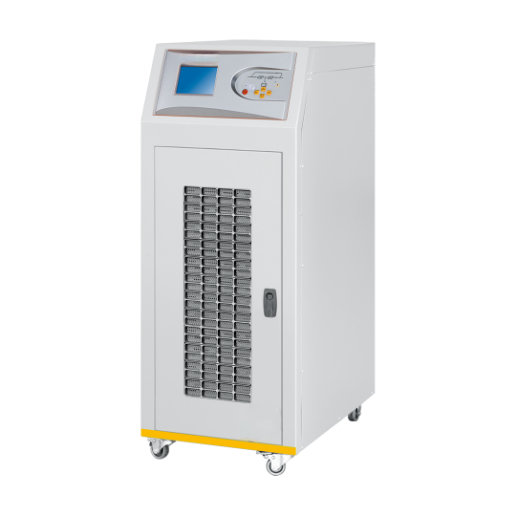
- Output Frequency:
The device produces a stable 400 Hz frequency primarily for use in the aviation, military, and industrial sectors. - Input Voltage Compatibility:
It is easy to power the equipment from various power sources because the rectifier supports a wide range of input voltages. - Power Rating:
You can pick the power rating that best suits your operational needs from among the multiple options. - Efficiency:
You may even face heavy operational costs to the same or even a worse extent because the system was not initially built to be efficient. - Durability:
The device, constructed to withstand harsh environments, is more reliable and less likely to break down due to extreme conditions. - Cooling Mechanism:
Advanced and effective powers are used to run the cooling systems that prevent the machinery from overheating, ensuring smooth and reliable material processing.
Power Ratings: From 500 VA to 5 KVA
The power ratings that are available range from 500 VA to 5 KVA. As a result, the requirements of a variety of applications, from home use to industrial processes, are met. A 500 VA device is the smallest one, and it can provide electricity to small devices such as routers, small appliances, or specific office equipment. Higher ratings, such as 5 KVA, are on the opposite end, but they are highly efficient in supporting heavy industrial equipment, server rooms, or large households with a high energy demand. The need for energy is met, and the performance is consistent. Efficiency and versatility are not only a service but a necessity, responding to the differing operational needs of various industries.
Input and Output Voltage Considerations
It is indeed essential to consider various aspects regarding input and output voltage for power solutions. The primary concern is ensuring that the equipment and systems in use are compatible with the voltage being fed to them. Most power systems have an input voltage range that complies with their country’s electrical standard, typically within 220-240V or 110-120V. The output voltage should always abide by the connected equipment requirements to avoid any potential harm or power loss. The vast majority of the new systems have an automatic voltage regulation (AVR) feature that adjusts the voltage automatically, ensuring it remains stable despite fluctuations. This protects sensitive electronics and achieves consistent power generation. Moreover, understanding harmonics and total harmonic distortion (THD) can help determine the soundness of the output voltage source, which is critical for medical devices and servers. Voltage regulation also improves the equipment’s life span and minimizes maintenance costs.
Pure Sine Wave Output Requirements
A clean sine wave output is of utmost importance when it comes to sensitive equipment, since it’s not just about efficiency but safety as well. Hospital equipment, audiovisual systems, and computers need a power supply that is perfect in terms of voltage and frequency. By using a technology that transforms DC to AC with a pure sine wave, the power inverter produces output similar to that of an electric utility. This transformation and the resultant clean power effectively reduce the adverse effects and even the risk of failure of electronic equipment connected to it due to harmonic distortion. Therefore, pure sine wave inverters are highly beneficial for devices because they provide spotless power and have significantly lower maintenance requirements. The operation of such delicate appliances would be much more reliable with pure sine wave electricity, as it would prevent issues like overheating, noise, and malfunctions. And the efficiency and equipment longevity would be passed on to the user owing to the very minimal Total Harmonic Distortion (THD) that the inverters produce.
Installation and Operation of 400 Hz Converters
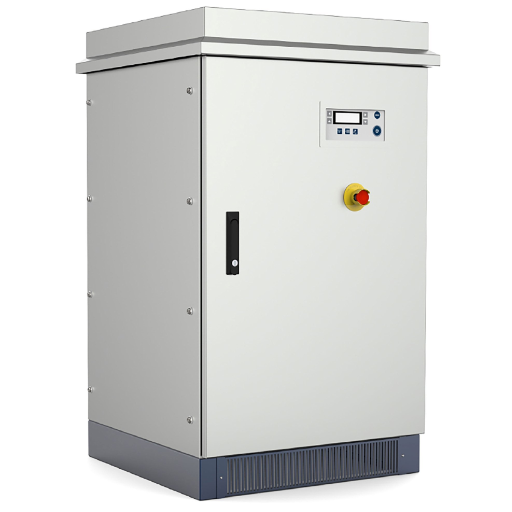
Correct installation and proper operation of the 400 Hz converters can guarantee not only good but also long-term work. Choosing a suitable place with adequate air that is free from intense dust, dampness, or vibration should be the priority. Check if the responsibility to properly instruct the connection falls on the user. The converter is securely fixed, and all electrical links follow the manufacturer’s latest guidelines, including grounding for safety.
When in use, ensure that the input and output voltages meet the requirements of the attached equipment. Make it a point to check the converter for wear and tear, excessive heating, or awkward noise during maintenance, as this will ensure you follow the manual’s directives. Always act accordingly when handling or fixing the equipment, particularly regarding electricity, to avert hazards. In case of problems arising, immediately contact the manufacturer or a certified technician.
Installation Guidelines for 400 Hz Systems
The failed installation of 400 Hz systems cannot occur if one is to establish a reliable and high-performance system, especially in aerospace and defense. One of the very first steps to take is to eliminate all the factors that could cause vibrations. In general, the location to be chosen should be free of dust and moisture. Dust, for example, causes the system to lose efficiency and have a limited life. It is imperative, then, to have the power source and system components compatible with the 400 Hz standard. Also, power losses should be minimized by using high-quality wiring.
Grounding is a crucial step, ensuring that the grounding system meets industrial standards and helps eliminate electrical noise, thereby reducing the risk of damage. Moreover, always choose machines specifically designed for high-frequency applications, utilizing notable transformers and converters, so that the power supply remains fixed continuously. On top of this, always adhere to industry regulations and standards, such as the International Electrotechnical Commission (IEC) guidelines, for safe and compliant installations. Last but not least, the whole operation will not start until after installation, when rigorous testing will be conducted to assess the system’s capability and functionality, and any issues will be addressed immediately.
Operational Best Practices for Frequency Converters
Regular monitoring and maintenance of frequency converters are key to their efficient operation over a long period. For that reason, a regular inspection schedule is needed to locate damage to installation parts such as capacitors, cooling systems, and electrical connections. Overheating or irregular voltage may indicate the problems underneath that require immediate repair. So, use the “health check” options like thermal imaging and vibration analysis in predictive maintenance to spot possible mistakes in advance.
Energy management becomes yet another crucial aspect if one is to exploit the potential of frequency converters fully. By adjusting the voltage and frequency output settings to meet current operational requirements, energy wastage is minimized, and system performance is enhanced. Additionally, using highly featured converters that offer regenerative braking or energy recovery systems is the next step to improve efficiency, particularly in operations with constant stop-and-start situations.
Maintenance Tips for Long-Term Performance
Regular Cleaning and Inspection
To prevent dust, dirt, and debris from affecting the frequency converter, clean the exterior case and ventilation openings as they accumulate dirt over time. A build-up of particles can cause the converter to heat up and decrease its efficiency. Inspect the internal components, such as circuit boards and wires, for damage or aging at least once every six months. According to the manufacturer, around 40% of the frequency converter failures can be traced back to insufficient cleaning and inspection.
Monitor Temperature Levels
Make sure to keep the condition of the facility within the limits laid down by the manufacturer. By making complete arrangements for the removal of heat, the number of breakdowns in converters that are due to high temperature will be reduced by almost 30%. Make the necessary arrangements, which may include installing a cooling system or providing enough fresh air to the room, to prevent the system from overheating when used for a long time.
Check Electrical Connections
Connections that are not tight or corroded can reduce the frequency of the operating system and even damage the equipment. It is a good practice to use a torque pen to tighten all connections according to the manufacturer’s recommended specifications and to conduct routine inspections every three months.
Update Firmware and Software
Periodically upgrade the converters’ firmware and controller software to the most current versions delivered by the manufacturer. These updates can include bug fixes, further optimizations, and new features, thereby contributing to improved performance and reliability. Keeping the converter’s software up-to-date can thwart around 20% of the energy loss that would otherwise occur.
Inspect Capacitors Regularly
Capacitors play an indispensable role in the good operation of frequency converters. They may lose their characteristics over time, which could affect the functionality of the device. Consumers should test and replace capacitors every five to seven years, or as the schedule says.
Implement a Preventive Maintenance Schedule
Lubrication of moving parts (if possible), checking for unusual noises or vibrations, and verifying the operational settings are among the maintenance tasks to be carried out. Moreover, it is advisable to follow the manufacturer’s maintenance scheme for preventive maintenance. By doing so, you can avoid unscheduled downtime by 25% which results in cost savings in the long run.
Reference Sources
Conversion analogique numérique Sigma Delta
Summary: This thesis investigates Sigma-Delta analog-to-digital conversion techniques, which are relevant for high-frequency applications like 400 Hz converters. The research emphasizes improving signal accuracy and reducing noise in mixed analog-digital systems.
Design and Modeling of an Integrated Micro-Transformer in Flyback Converters
Summary: This paper presents the design and modeling of a square micro-transformer for integration into flyback converters, which are often used in high-frequency power conversion systems.
Frequently Asked Questions (FAQs)
Q: How does a 400 Hz frequency converter work?
A: A 400 Hz frequency shifter functions by shifting the input frequency, typically 60 Hz or 50 Hz, and converting it into the desired frequency that gives the carrier a 400 Hz frequency. Such voltage converters need to work with electronic parts that produce the voltage and frequency required by the technique. Well, if the specification requires the frequency to be precisely 400 Hz, the conversions need to be made accordingly. The Equipment provided to the military is usually at 400 Hz, though civilian uses 60 Hz. Some of these converters are static, while others are rotary, depending on their application, specifically whether they are heavy-duty or not. The ground power system ensures that electronic equipment designed for 400 Hz operates efficiently, especially in aircraft areas where reliable ground power is essential.
Q: What are the benefits of using a 400 Hz frequency converter in aircraft?
A: The operation of an aircraft utilizing the 400 Hz frequency converter results in several advantages, the primary ones being the decrement of weight and the improvement of electrical systems efficiency. Airplanes are built to draw power from a 400 Hz power source, which allows for the use of smaller and lighter transformers and motors compared to those controlled by 60 Hz. Besides, 400 Hz converters go even further to provide high efficiency and low output distortion, which is really crucial for the most sensitive electronic equipment. This provision will ameliorate the stability of the power supply, hence decreasing the risk of breakdowns during operation. Applying a 400 Hz frequency converter to the system will generally improve the relative reliability and performance of the aircraft systems.
Q: Can a 60 Hz frequency converter be used for 400 Hz applications?
A: A converter working at 60Hz is not a viable option for 400Hz applications as the frequency requirements are incredibly different. Equipment for 400 Hz must be precise about both voltage and frequency to work, which is impossible with a standard 60 Hz frequency converter. But, by making use of the ones that can convert 60 Hz to 400 Hz, the converters do exist that are specifically meant for this particular purpose, thus assuring that the output obtained with such converters will meet the required specifications of the 400 Hz equipment. Proper selection of the conversion unit is of utmost importance to avoid the risk of destroying delicate instruments.
Q: What types of power supply systems use 400 Hz frequency converters?
A: The technology of 400 Hz frequency converters is instead commonly taken advantage of today in numerous power supply systems, with the wearer being the aviation industry and military. By providing 400 Hz power for aircraft systems, ground power units, and testing equipment, these converters render an essential service. The situation is not different in the industrial sector, where high-frequency motors are a necessity. There, the machines come in the form of a 400 Hz single-phase frequency converter. Moreover, the application of the latter is frequently seen and needed where a compact power solution is required. Overall, the adaptability of frequency changers to different working conditions, achieved most economically, provides a perfect picture of today’s society.
